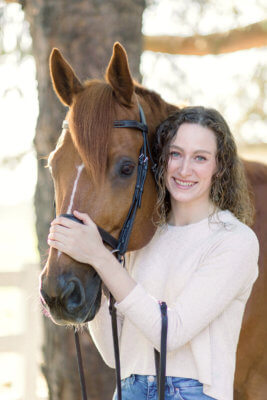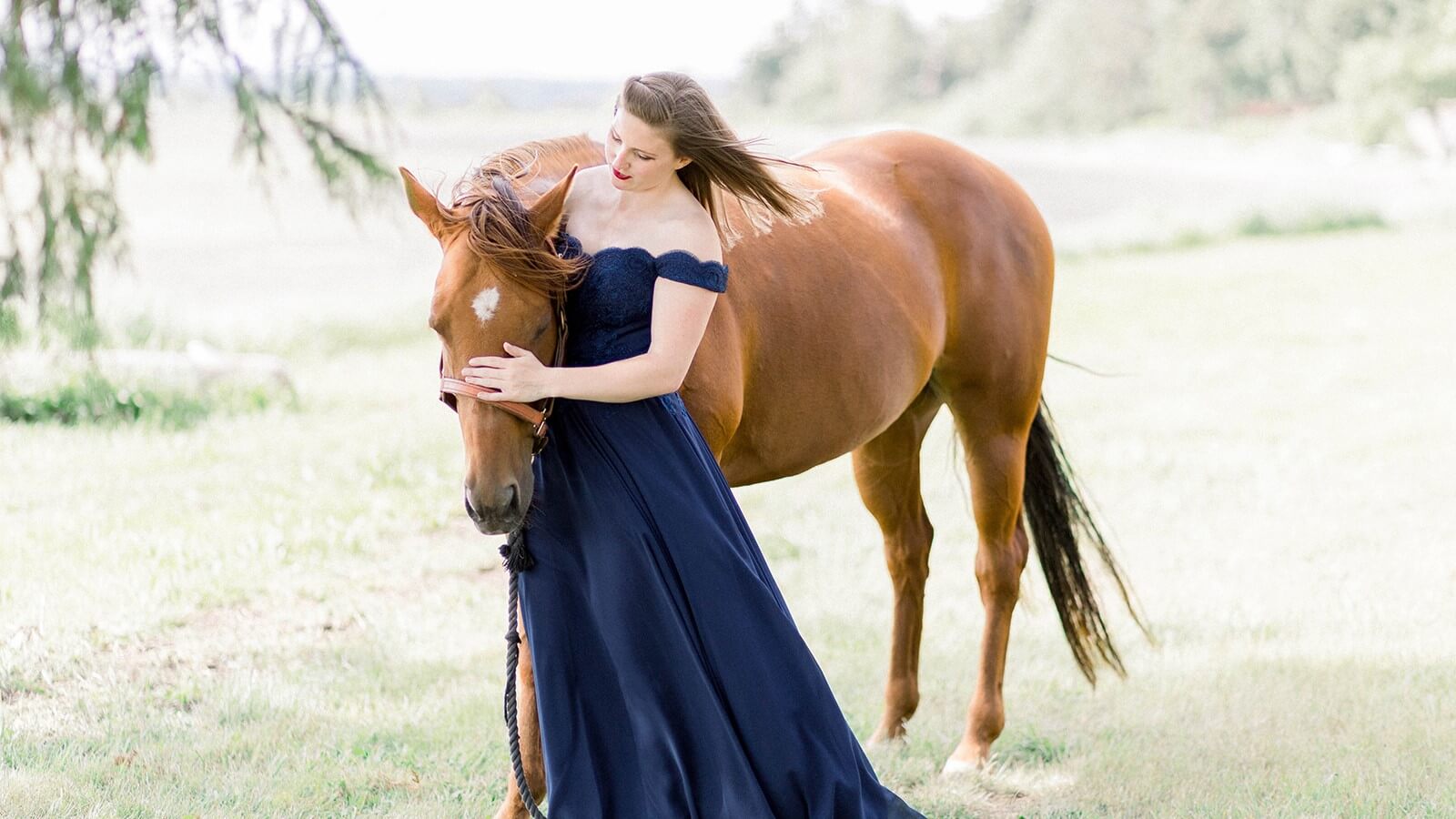Getting quality portraits of you and your horse can show the bond you share and leave you with keepsake images. But as your portrait session approaches, how do you know you’re ready? Here are a few tips to lead you to a more successful session with your equine partner and help you get the most out of the experience.
What should my horse and I wear?
First and foremost, make sure your horse is very well groomed. For yourself, choose an outfit(s) you feel comfortable in. This may sound simple but can dramatically change the experience and resulting images. When you wear an outfit you feel comfortable in, you appear more relaxed and confident.
Opt for more neutral-colored clothing. Cameras often pick up bright colors and small patterns differently than the eye. These can distract the eye from what matters most—you and your horse. Imagine that you have just chosen a neon lead rope for your portraits. When viewing portraits your eye will naturally be drawn away from your faces and straight to the neon lead rope.
You don’t want the photos to be about what you and your horse are wearing, but rather the relationship the two of you share. Brighter colors and patterns can be a distraction, so it’s advised to just avoid them all together. Black or brown halters, bridles and lead ropes are great options. The color coordination between tack and your outfit should be cohesive.
How should I prepare my horse?

Ask yourself if your horse is ready for portraits. It’s not always as easy as putting a horse in front of a camera. If your horse doesn’t have good ground manners and/or is unable to stand still, it may not be the right time to pursue a photo shoot. On the other hand, if your horse has great ground manners but has a tendency to be high strung, exercising it earlier in the day can be beneficial. This allows for time to get all cleaned up and ready to begin photos without feeling rushed just before the session.
Don’t forget to feed your horse! It’s common for portrait sessions to take place in the evening for the quality of the natural light. Evenings are the golden hour! Evening sunlight is softer and there are fewer shadows. Feeding your horse before the session may help cut down the number of snack breaks. Horses still may be tempted to sneak a snack during the session, because let’s just face it, it’s too difficult to resist that yummy grass nearby. However, feeding before should keep the impatient behavior and snack breaks to a minimum.
What should I bring?
I recommend that you bring snacks, fly/mosquito spray, and a friend who’s capable of handling your horse. Horses cannot be posed for photos. You can’t tell them to keep their ears forward or to stay completely still. Ear movements will change naturally, so bringing your horse’s favorite snack is a great way to ensure that they are attentive and engaged during the session. Consider packing those carrots your horse has been eyeing in the barn. Your horse will happily thank you later!
Packing a bucket with some grain in it is another effective option. Shaking the bucket is sure to capture the horse’s attention. Ask a friend to tease them with treats off camera. The friend also doubles as a handler. Never expect the photographer to handle your horse.
If you live in an area where mosquitoes or flies are a problem, it’s essential to pack a spray to help keep them away. You and your horse want to be as comfortable as possible during your session.
What should I do during the session?
Don’t worry! Your photographer will help guide you through poses to make you feel and look your best. The best advice is to just relax. Go into your session excited about the experience and grateful for another opportunity to spend more quality time with your best friend. Your enthusiasm will shine through creating more genuine smiles and laughter in your keepsake images.
See this article in the September 2021 online edition:

The Northwest Horse Source is an independently owned and operated print and online magazine for horse owners and enthusiasts of all breeds and disciplines in the Pacific Northwest. Our contemporary editorial columns are predominantly written by experts in the region, covering the care, training, keeping and enjoyment of horses, with an eye to the specific concerns in our region.






